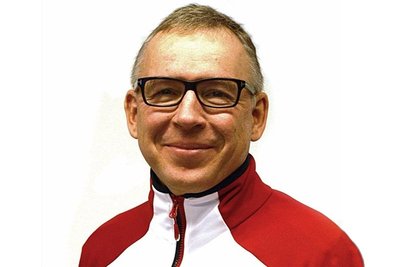Dr. Roald Bahr, Keynote Speaker at the 4th Annual Injury Prevention Symposium

Steadman Philippon Research Institute (SPRI) and the United States Olympic and Paralympic
Committee’s (USOPC) Coalition for Prevention of Illness and Injury in Sport cohosted the 4th Annual Injury Prevention Symposium on Wednesday, April 29, 2020.
More than 5,800 researchers and clinicians from around the world registered for the virtual event, which focused on the most recent advances in injury prevention in sports.
Dr. Marc Philippon, Steadman Philippon Research Institute co-chair and managing partner of The Steadman Clinic, welcomed the speakers and attendees to the event and introduced keynote speaker, Dr. Roald Bahr, professor of sports medicine at the Norwegian School of Sport Sciences and chair of the Oslo Sports Trauma Research Center. Dr. Bahr is also chief medical officer and chair of the medical department at the National Olympic Training Center. He is also the director of the Aspetar Sports Injury and Illness Prevention Program at Aspetar Orthopaedic and Sports Medicine Hospital in Doha, Qatar.
The focus of Dr. Bahr’s discussion was his team at the medical department at the National Olympic Training Center in Norway and its role working with elite athletes.
“We have communicated very clearly that the first and foremost responsibility of our department is the long-term health of the athlete,” said Dr. Bahr. “This should weigh more than winning medals in the short term, and that our primary motivation should be the health of the athlete, not performance. The main goal of the department is to provide optimal medical treatment for today's and tomorrow's elite athletes, as well as focus on working to prevent injury and illness.”
Dr. Bahr says the guiding philosophy of their athlete screening and monitoring programs have direct and immediate benefits for all the stakeholders, including the athlete, medical staff and coaches
The first step to protecting athletes is a screening exam followed up with an actual plan targeting specific areas that need to be worked on by the athletes, the medical team and the coaching team. The second step is the injury and illness monitoring program.
“We can identify areas where we might decide to focus prevention efforts,” said Dr. Bahr. “We can assess the effects of anything that we do to try and prevent injury, illness and fatigue. But this is not the normal injury and illness surveillance program typically done with an athlete reporting to the medical team. It’s done by athletes simply using a cell phone.”
Each week, athletes get an alert on their cell phone to respond to a few key questions including:
• Have you had to change your training because of a health problem?
• Has your performance been affected by a health problem?
• Do you have any symptoms of pain?
The medical team is alerted to the responses through an online health dashboard and then provides individualized follow-up on each problem; it also records the diagnosis information in a database.
However, Dr. Bahr pointed out that there are critical factors for a program like this to work. The athletes need to respond to the questions and the practitioners must like the system. So far, there is an 85 percent response rate, which Dr. Bahr considers a great success.
Dr. Bahr concluded his comments at the Injury Prevention Symposium by restating what he feels is the most important part of his work - that what they do is helping the athletes of today to reduce the number of injuries right now.

